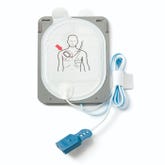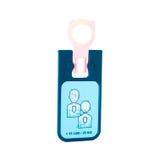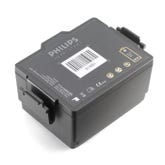AEDs and Defibrillation
- Jun 18, 2018

Quick use of an AED and CPR can increase chances of survival from cardiac arrest by 60%.
Defibrillation is the only therapy for dangerous heart arrhythmias which cause Sudden Cardiac Arrest (SCA). While EMS professionals carry complex manual defibrillators, AEDs (automated external defibrillators) are compact, easy to operate medical devices designed for use by untrained individuals as well as professionals. Without training and AED education however, many Americans are reluctant to step-in and use this life-saving device for various reasons. The most important fact we would like to point out is that an AED will NOT shock a person who does not need defibrillation. Learn some common myths about AEDs here.
During sudden cardiac arrest, electrical activity in the heart is disrupted and the heart quivers erratically instead of pumping oxygenated blood to vital organs. AEDs are designed to read the patient’s heart rhythm (through electrode pads placed on the chest) and detect specific abnormal heart rhythms in which they will deliver a shock. The electrical shock will stop the heart’s chaotic rhythm, and allow the heart’s natural pacemaker to kick in, hopefully restoring a normal heartbeat.
Check out the differences between a Heart Attack and Cardiac Arrest as these two heart conditions are very different and often misinterpreted.
As public awareness of Sudden Cardiac Arrest, CPR and AEDs increases, survival rates (currently less than 10% on average) will hopefully increase as well. Unfortunately, it seems that for many public places such as businesses, hotels, shopping centers, etc. to purchase AEDs, implement a program to properly manage the devices and train staff, tragedy often must occur first to garner enough attention and awareness.
AED Need to Know Facts:
• You will NOT harm a person using an AED — the defibrillator will NOT shock unless necessary.
• Anyone can operate an AED. These life-saving devices are NOT restricted to professionals.
• All AEDs provide voice prompts to guide rescuers through the process.
• AEDs are simple to use, but require maintenance to ensure rescue readiness.
• If a person is unconscious and not breathing, USE the AED in combination with CPR for best chance or survival.








 CALL US:
CALL US: